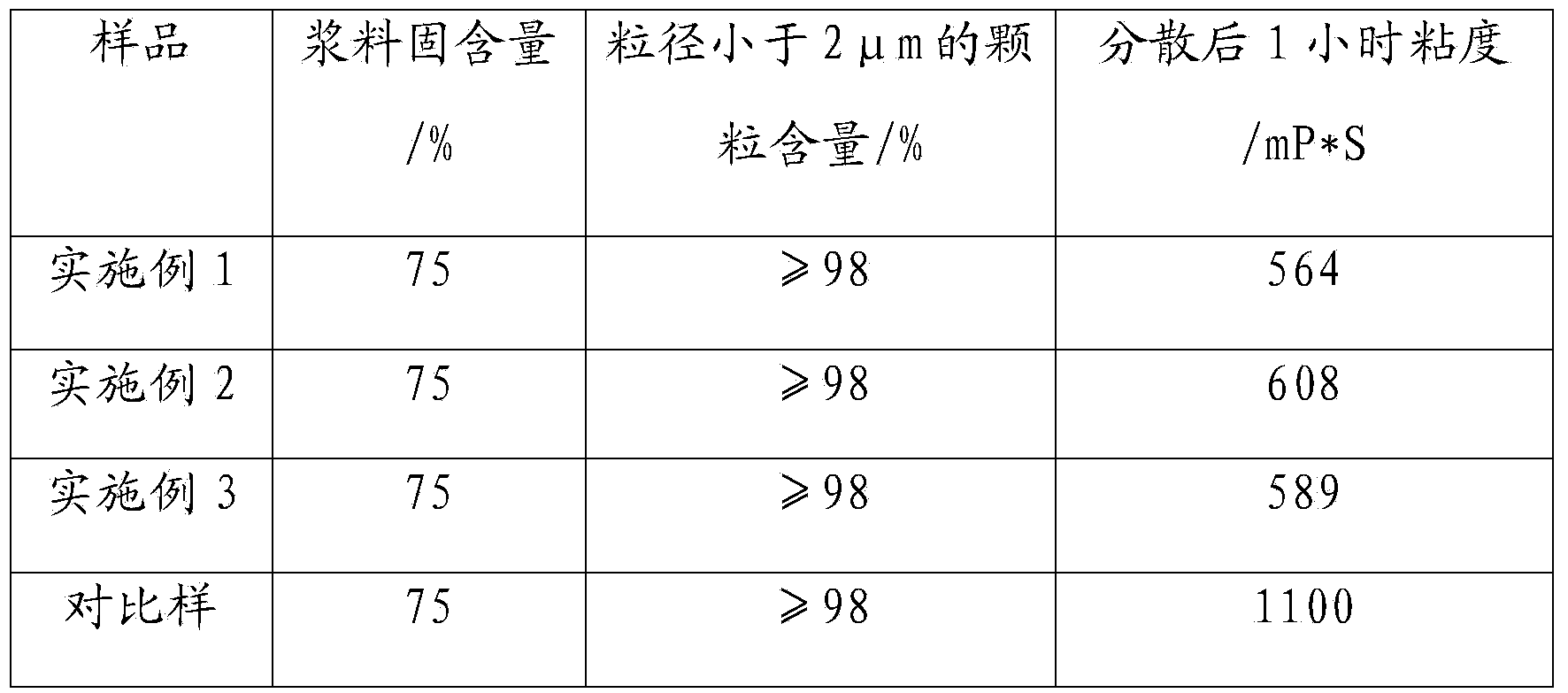Preparation of efficient ground calcium carbonate grinding dispersant by photo-initiating room-temperature RAFT (Reversible Additive Fragment Transfer) polymerization
A technology of photoinitiator and dispersant, applied in the field of high-efficiency grinding dispersant and preparation, can solve problems such as precipitation and lower utilization efficiency of dispersant, and achieve the effects of narrow molecular weight distribution, controllable molecular weight and low energy consumption
- Summary
- Abstract
- Description
- Claims
- Application Information
AI Technical Summary
Problems solved by technology
Method used
Image
Examples
Embodiment 1
[0023] Preparation of sodium polyacrylate with low molecular weight and narrow distribution:
[0024] Add 11.16 g of dithioester chain transfer agent 4-cyano-4-dithiobenzoyloxyvaleric acid, photoinitiator 2,4,6-trimethylbenzoyl-di 7.00 g of phenylphosphine oxide, 355.0 g of toluene as a solvent, and 256.59 g of tert-butyl acrylate as a monomer. The system was bubbled with nitrogen for 20 minutes and then sealed. During the bubbling process, avoid light. The reactor should be wrapped with aluminum foil, and then placed under an ultraviolet lamp with a central wavelength of 365nm. The ultraviolet light is irradiated by a cut-off plate with a cut-off wavelength greater than 254nm, while maintaining the incident intensity of ultraviolet light at 10mw / cm 2 , Remove the aluminum foil at room temperature and start to react for 8 hours. After the completion, the obtained solution was mixed with 61.17 g of sodium hydroxide solution (32%) and then heated and hydrolyzed for 3 hours to ...
Embodiment 2
[0026] Preparation of sodium polymethacrylate with low molecular weight and narrow distribution:
[0027] Add 9.47g of dithioester chain transfer agent cyanoisopropyl dithiobenzoate and 7.49g of photoinitiator 2,4,6-trimethylbenzoyl-diphenylphosphine oxide in the quartz reaction vessel, Solvent toluene 248.54g and monomer t-butyl methacrylate 213.00g. The system was bubbled with nitrogen for 20 minutes and then sealed. During the bubbling process, avoid light. The reactor should be wrapped with aluminum foil, and then placed under an ultraviolet lamp with a central wavelength of 365nm. The ultraviolet light is irradiated by a cut-off plate with a cut-off wavelength greater than 254nm, while maintaining the incident intensity of ultraviolet light at 10mw / cm 2 , Remove the aluminum foil at room temperature and start to react for 6 hours. After the completion, the obtained solution was mixed with 42.00 g of sodium hydroxide solution (32%) and then heated and hydrolyzed for 3 ho...
Embodiment 3
[0029] Preparation of low molecular weight narrow distribution poly(sodium acrylate-co-sodium methacrylate):
[0030] Add trithioester chain transfer agent 2-(dodecyltrithiocarbonate group)-2-methylpropionic acid 18.21g in quartz reaction vessel, photoinitiator benzophenone 4.55g, solvent toluene 351.24 g and the monomers tert-butyl methacrylate 142.20 g and tert-butyl acrylate 128.23 g. The system was bubbled with nitrogen for 20 minutes and then sealed. During the bubbling process, avoid light. The reactor should be wrapped with aluminum foil, and then placed under an ultraviolet lamp with a central wavelength of 365nm. The ultraviolet light is irradiated by a cut-off plate with a cut-off wavelength greater than 254nm, while maintaining the incident intensity of ultraviolet light at 12mw / cm 2 , Remove the aluminum foil at room temperature and start to react for 8 hours. After the end, the resulting solution was mixed with 59.41 g of sodium hydroxide solution (32%) and then...
PUM
| Property | Measurement | Unit |
|---|---|---|
| molecular weight distribution | aaaaa | aaaaa |
| molecular weight distribution | aaaaa | aaaaa |
| molecular weight distribution | aaaaa | aaaaa |
Abstract
Description
Claims
Application Information
 Login to View More
Login to View More - R&D
- Intellectual Property
- Life Sciences
- Materials
- Tech Scout
- Unparalleled Data Quality
- Higher Quality Content
- 60% Fewer Hallucinations
Browse by: Latest US Patents, China's latest patents, Technical Efficacy Thesaurus, Application Domain, Technology Topic, Popular Technical Reports.
© 2025 PatSnap. All rights reserved.Legal|Privacy policy|Modern Slavery Act Transparency Statement|Sitemap|About US| Contact US: help@patsnap.com

